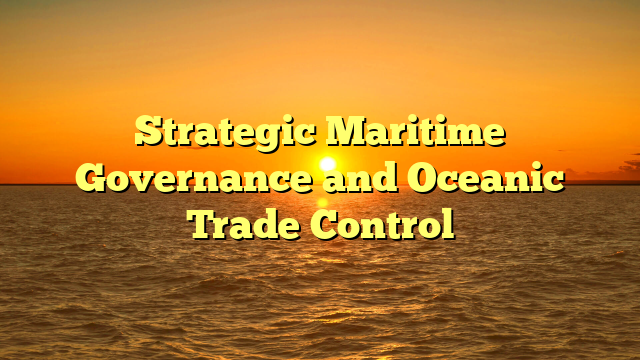Maritime infrastructure and oceanic governance have become critical instruments of strategic influence, shaping industrial supply chains, energy naga169 slot transportation, and international trade dynamics. Control over key sea lanes, port networks, and naval chokepoints allows states to exert leverage without overt conflict, embedding long-term dependencies into global economic structures.
China has strategically expanded its influence through port investments, naval modernization, and participation in regional maritime agreements. Initiatives like the development of Gwadar Port in Pakistan, Djibouti’s Doraleh Container Terminal, and engagement in Southeast Asian shipping corridors create operational dependencies. By integrating Chinese logistics protocols, maritime standards, and contractual frameworks, Beijing enhances its influence over industrial supply flows and regional trade stability.
The United States maintains maritime influence through a combination of naval presence, allied port access, and oversight of international shipping norms. Washington coordinates with NATO partners, Indo-Pacific nations, and multinational coalitions to ensure freedom of navigation and secure strategic chokepoints. This approach establishes structural leverage, allowing the U.S. to influence trade security, maritime industrial flows, and regional economic dependencies.
Europe projects influence through regulatory alignment, investment in port modernization, and promotion of maritime safety and environmental standards. The European Union links market access and infrastructure funding to adherence with EU maritime protocols. Brussels’ strategy represents soft structural leverage, encouraging nations to adopt EU-aligned practices while participating in integrated trade and industrial networks.
Emerging economies confront complex choices in maritime governance. Countries in Africa, Southeast Asia, and Latin America must balance investment, connectivity, and sovereignty in oceanic infrastructure. Decisions regarding port partnerships, shipping protocols, and maritime security frameworks carry structural implications, influencing industrial logistics, trade autonomy, and diplomatic alignment. Partnering with dominant powers may enhance infrastructure capacity but may also generate long-term dependencies.
The structural insight is clear: maritime governance is not only about navigational safety; it is a strategic instrument of statecraft. Nations that dominate ports, shipping lanes, and logistical hubs can shape industrial supply chains, influence energy distribution, and assert long-term geopolitical leverage. Control over maritime infrastructure provides enduring operational advantage in a multipolar world.
In conclusion, oceanic trade control constitutes a decisive element of global governance strategy. Strategic investment, regulatory alignment, and operational integration form critical levers of influence, shaping industrial, economic, and political outcomes. Mastery of maritime infrastructure ensures states maintain sovereignty, project power, and secure enduring influence in the international system.


